Earthship Biotecture Transcribed: Session 2/Part8: About Solar Power, Doing It Yourself? Solar Vs Wind.
Commentary:
This is the first part all about Power! There is a lot to discuss and understand so that you can make good choices for your power needs. If you are, for example, choosing between solar power and wind power you may want to read on. There are VERy few cases where wind power make much sense when you take everything into consideration.
I would like to add a few points here that relate to some things Mike says. This lecture was given in 2009, and now some ten years later there are some updates especially relating to power. Mike mentions that the rationale for using DC Power is about it making you more vulnerable when an inverter breaks. Whilst this is true, there are some other important reasons for having your home running directly from battery DC power (via a solar charge controller). I have lived off-grid purely on solar power for around 13 years, and have tried just about every way of organising the power systems.
There are, as always pro's and cons to each. My recommendation for how to organise power are to put Lights, Water Pumps, USB and Phone Charging all directly onto the 12V DC (or 24V, 48V with a transformer to 5V or 12V if needed). The main reason for this is that most inverters suck a lot of power up just to stay on, and when they are on 24/7 they simply waste a lot of it. Second is that there is inefficiency in converting power from DC to AC inverted power, and most of the time that gets converted right back to DC with the black power plugs that come with most appliances.
I also have a low power backup inverter just in case my main unit goes down. These days a small inverter costs peanuts, you can buy something very usable for just $50-100 or even less if you just need to power up a laptop. This means that during cloudy seasons, I can charge appliances, have the lights on, use my laptop (on battery power), listen to music, and have water working with almost zero power use.
The main and almost only drawback to this is with lighting. There are not nearly as many 12V LED lighting options that provide nice comfortable warm white lights as there are 220V commercially available products. If you hare very fussy about lighting, and would like to have the most comfortable lighting you can, then you can also have the 220V light bulbs (such as Phillips etc) .. with the 12v lighting in place as a backup for those very cloudy days.
The POM (Power Organising Module)
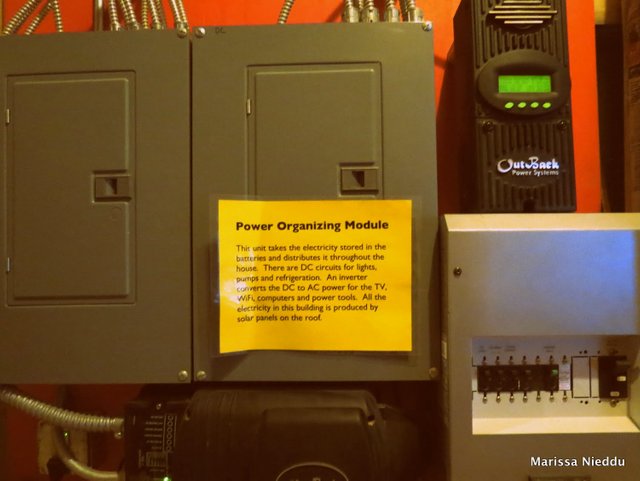
There is a power system that you can buy directly from Earthship Biotecture in the USA. This system has been developed by Mike to be a simple way to install and run power for your home. It is worth saying that these days solar technology has gotten SO cheap and easy to install, and maintain that it is one of the easiest parts of the Biotecture systems to replicate or simply make yourself. You do need some knowledge and experience, but anyone with some basic electrical skills and some YouTube skills can figure this out. I did, and can now install a solar system very comfortably and on my own in not much time at all.
The main components for a basic minimal power system are: Solar Panels (starting at $100-200 for enough power for laptop and lights), Deep Cycle Tubular Battery (starting at around $150), Solar Charge Controller (Can be as cheap as $50), Power 12/24/48Volt DC- 110/220 volt AC/inverter ($100 and up), Copper Cables ( can get costly depending on the amount of wiring in the house and distance from solar panels to batteries.
This option becomes more compelling if you live far from the USA, such as in India. It is very easy to purchase all of these items at very low prices in India.. Importing large power units from the USA is very costly, incurs import duty, is not very eco friendly, and doesn't do anything more than the version you can make for yourself.
Earthship Seminar Transcription Session 2 -
Part 8: Power
We kind of devised this (Power Organising System) after The Dennis Weaver house that we did in Colorado like 20-some 20 ish years ago. He had money, he was a movie actor, so he had the money to buy whatever, and so we we got the best solar technicians we could find... we flew him in... and that power system cost about 80 grand even 20 years ago... or more... close to a hundred grand. It looked like the engine room of a submarine, nobody even knew how to use it.
It was in that time then that I decided to go in this direction, and what I had been living with... crude forms for a long time ...but I didn't consider myself a technician. I hired the best-trained solar technicians that I could to design this electrical system for me. I didn't consider myself as knowing enough to do that, yet I had been living out on the desert with probably the second divorce of the second wife by then... or something... because this tends to be hard on wives.. (laughter).
But I'd been living with solar and wind electricity, I knew how to use it, I knew the idiosyncrasies of it. All these high-powered people that I flew into Colorado for Dennis Weaver's house had not lived with it. They knew the formulas, and they knew how to design it... but they lived in homes that were on the grid, their office was on the grid. I was living with it and I found out that in fact, in practicality, and pragmatic experience... I knew more than they did. So I blew them all off after Weaver's house and started doing our own system, and nobody wanted to do it this way...They called me an idiot... but we had been through it, we had we had our offices then on inverters and solar power... and we had experienced what happens when the inverter fries... nothing works! No print mechanism, no computers, no anything, nothing works when the inverter fries... So we that's when we developed this system with AC and DC power, and that's why we do it. You are not vulnerable to one piece of equipment going bad and system your house will still function if an inverter breaks, and so that's the rationale for it.
It makes good sense don't let anybody talk you out of it. Now other than that then you're looking at a choice between Sun, wind, hydro power.. This (our packaged) power system is set up to receive power from Sun, when hydro generator gas generator... online grid. All it does is channel all the energy to the batteries. You don't have a dual system, you just have many sources going to the same bank of batteries.
Solar Power Vs Wind Power:
Now people ask a lot about wind. I would say only use wind if you have to... it's great but it's moving parts. Photovoltaic panels are not moving parts, they're good for I mean they're good for at least twenty to thirty to forty years... they don't have any moving parts, they're not going to wear out. And in a climate like this with 300 plus Sun days a year they're gonna be your best bet. I play with wind, and we're actually working on a new vertical axis windmill... Kirsten may have showed you pictures in history of some vertical axis windmills. They are the best, they aren't as efficient, but they last longer. Every store-bought propeller windmill we've played with, there's these two towers out here... two posts... they blew apart. Windmills blew apart, their high maintenance, you send them back to the factory. They fix them the first time, they still cost you three or four hundred dollars to get them down and back up... and Freight and all that.. So I don't I don't use windmills much. The reason I play with windmills here is so I can get some experience... so I can use them in Norway or places that don't have much Sun. If you're in an area that's got you know even 275 sunny days a year (or less if demand is low), put your money into solar panels not windmills.
Solar panels... the bigger you buy them... the less connections you have. So right now we're using 200 watt BP solar, but almost any kind is pretty good these days... but 200 watt per panel is you know... when they get 300 watt I'll use them... because the bigger the panel the less connections. There are things coming out... even in these kind of panels... but also they call thin film. We're playing with it right now, but the reason we're playing with it is because some of these newer products that are not really out there big-time yet, produce power... see a 200 watt panel may produce 30 watts on a cloudy day... These new thin film solar ones they may produce like 60 or 70watts. In other words they're getting the panel... manufacturing is getting to the point where they're producing power from light, not just direct Sun.
It's out there, they just haven't gotten it in here yet. It's out there... if you go buy a solar calculator at Walmart it will charge from the white lights of Walmart. I've even used a solar calculator in a full moon. So the it's light, it's photons... so that's coming. And so panels that produce power on cloudy days are gonna make a lot of sense, but even close to fifty percent on a cloudy day is not good for a regular house.
Solar power is sufficient in almost any part of world when you Designing Down and efficiently.
Which brings you to the nature of these buildings is such that... we we have done everything we possibly can in power, in water, sewage heating and cooling to reduce the amount of electricity that you need. There's no lights on in this room because there's a lot of solar gain and light. There's no fans to cool because there's natural convection cooling. There's a very minimal water pump action, you can hear it in there. She's probably running water into the toilet cuz nobody, coz you didn't take your showers yet.
So the there's very minimal power used in these homes. That means we can have a very small system. You take this system, our best system, six or eight panels, six or eight batteries, the latest 2.5Kw inverter, they call that small! See you need a 10Kw system at least to run or conventional home... because conventional homes are just full of things that draw power. You know the the entertainment centers are on all the time, and we have timers on ours, see at the Phoenix it's got a flat-screen TV, it's got a DVD player, but you have to turn a timer and it goes off in two hours and if you're watching Lord of the Rings you've got to turn it back on or something.
UPDATE NOTE: These days timers are totally unnecessary as my flat 23inch flat screen uses only 25Watts when switch on , and uses almost nothing at all on standby. Time have changed since 2009! Our entertainment systems these days are best chosen as battery powered devices which today will run for 10 hours on battery and use almost nothing to charge. They provide pretty amazing sound quality too! Most appliances now have to adhere to much stricter power consumption uses on standby.
We would have people leave it all on all the time, they'll go off skiing... leave the coffee-maker on those kind of things can ruin it so we've had idiot. We've had to idiot proof the houses, and design them down in their use of power... And you have everything at the Phoenix, you have high-speed internet, you have flat-screen TV, coffee makers, everything, but it's all setup so you can't really screw up...
Earthship Seminar Video 2009 - Session 2 -Part 8
I would like to thank Mike Reynolds for giving me permission to transcribe, edit and reformat this work for the Steem Blockchain! If you do read or watch this and have any questions please ask in the comments. I am happy to educate and help you to understand this. Biotecture is amazing in so many ways, and even after 20 years I still have not seen a model of sustainable building that even comes close in so many important areas such as performance, carbon footprint, longevity, ease of build, etc... Now you can also come to understand what Biotecture Really Is about!
READ PREVIOUS TRANSCRIPTS
SESSION 1
Part 1: The Global Model
https://steemit.com/ecotrain/@eco-alex/earthship-biotecture-101-learn-with-michael-reynolds-part-1
Part 2: Staying Cool: The Convection Engine
https://steempeak.com/ecotrain/@eco-alex/earthship-biotecture-transcribed-seminar-with-michael-reynolds-transcribed-part-2
Part 3: The Evolution of the Global Model Earthship:
https://steempeak.com/ecotrain/@eco-alex/earthship-biotecture-transcribed-seminar-with-michael-reynolds-part-3
Part 4: Heating your home with body heat in Norway, about permits in USA and Europe... How to get them fast
https://steempeak.com/ecotrain/@eco-alex/earthship-biotecture-transcribed-pt4-heating-your-home-with-body-heat-in-norway-about-permits-in-usa-and-europe-how-to-get-them
Part 5: How to Retrofit, Getting Permits, Tire Toxicity?
https://steempeak.com/ecotrain/@eco-alex/earthship-biotecture-transcribed-pt-5-how-to-retrofit-getting-permits-tire-toxicity
Part 6: Bottle / Can Walls, Tyre Foundations / Snow Water
https://steempeak.com/ecotrain/@eco-alex/earthship-biotecture-transcribed-pt-6-q-and-a-bottle-can-walls-tyre-foundations-snow-water
Part 7: Can you insure an earthship?, the double/triple greenhouse, the global model evolution + more
https://steempeak.com/ecotrain/@eco-alex/earthship-biotecture-transcribed-pt-7-q-and-a-can-you-insure-an-earthship-the-double-triple-greenhouse-the-global-model
Part 8: Final: Year round fruiting trees, sizing greenhouses + more
https://steempeak.com/ecotrain/@eco-alex/earthship-biotecture-transcribed-pt-8-final-q-and-a-year-round-fruiting-trees-sizing-greenhouses-more
SESSION 2
Part 1: Water, how to size your roof, choosing the right materials for water catchment.
https://steempeak.com/ecotrain/@eco-alex/earthship-biotecture-transcribed-session-2-part-1-water-how-to-size-your-roof-choosing-the-right-materials-for-water-catchment
Part 2: Cisterns, Filtering Water, Designing Down & Layered Thinking.
https://steempeak.com/ecotrain/@eco-alex/earthship-biotecture-transcribed-session-2-part-2-cisterns-filtering-water-designing-down-and-layered-thinking
Part 3: Water! Be Self Sufficient Secure & Sustainable.
https://steempeak.com/ecotrain/@eco-alex/earthship-biotecture-transcribed-session-2-part-3-water-be-self-sufficient-secure-and-sustainable
Part 4: Botanical Cells, Using Water 4 Times, Food Production.
https://steempeak.com/ecotrain/@eco-alex/earthship-biotecture-transcribed-session-2-part-4-botanical-cells-using-water-4-times-food-production
Part 5 : The Solar Toilet, Making Mistakes and Evolving is Part of the Process.
https://steempeak.com/ecotrain/@eco-alex/earthship-biotecture-transcribed-session-2-part-5-the-solar-toilet-making-mistakes-and-evolving-is-part-of-the-process
Part 6: Black Water Treatment In Any Climate, Food Production.
https://steempeak.com/ecotrain/@eco-alex/earthship-biotecture-transcribed-session-2-part6-black-water-treatment-in-any-climate-food-production
Part 8: Q&A: Water, Botanical Cells, Water Treatment
https://steempeak.com/ecotrain/@eco-alex/earthship-biotecture-transcribed-session-2-part-7-q-and-a-water-botanical-cells-water-treatment
Did you know, I built four Earthships in India as well as being instrumental the creation of the first Earthship in the UK, Earthship Brighton. If you are also on this path and would like to read my story, I have recently published a book. It is not only a great story, but a valuable resource for you to learn from. I had no experience or training when I embarked on my mission, but managed to successfully build a gorgeous home called Earthship Karuna.
You can buy this book with Steem on the homesteaders co-op. Whilst you are there please do have a look at some of the other products as there are all kinds of great things there!

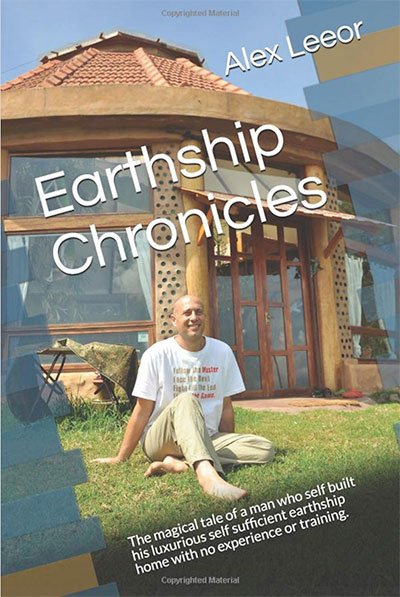
https://homesteaderscoop.com/product/earthship-chronicles-ebook/
If you don't have any Steem you can also buy the ebook and paperback on amazon.
http://mybook.to/Earthship-Chronicles
or
https://www.amazon.com/Earthship-Chronicles-sufficient-luxurious-experience-ebook/dp/B07MYCBXYB
@ecoTrain
Supporting People Who Help
Make The World A Better Place
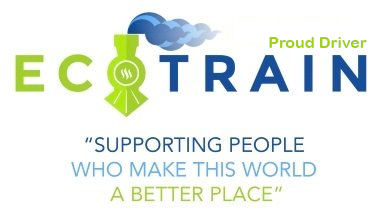
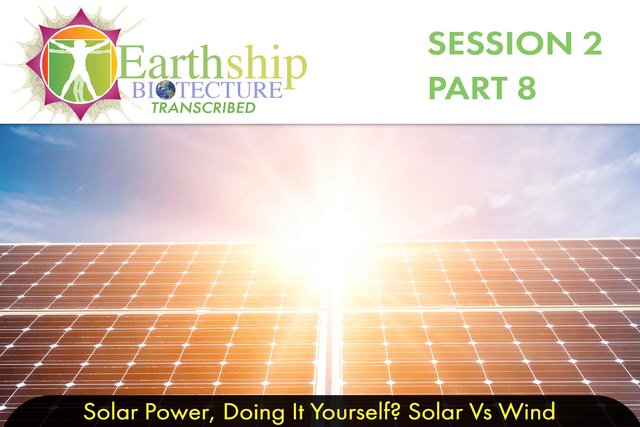
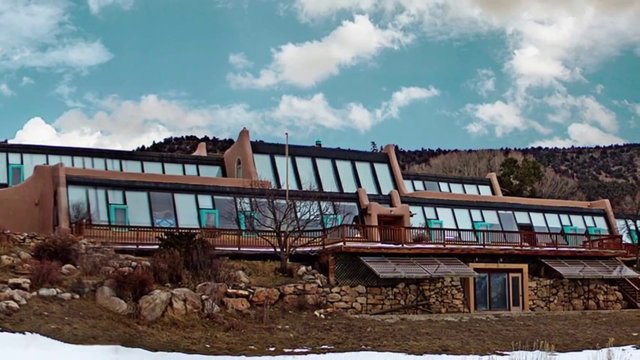
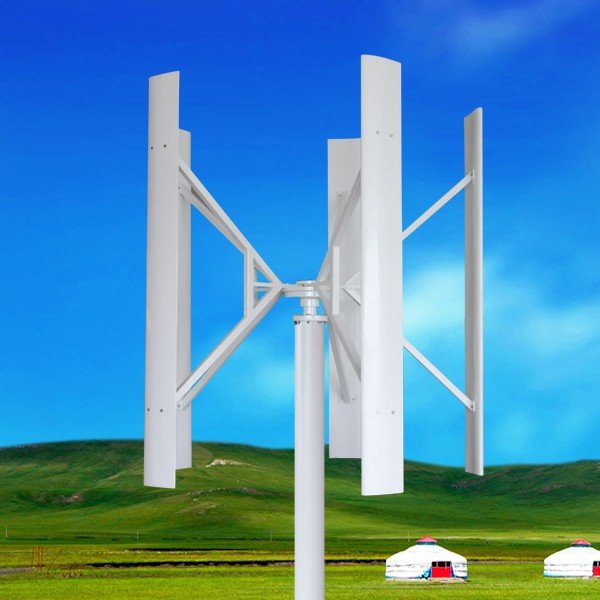



Apparently the US trade sanctions with China are having the side effect of slashing the cost of solar panels in Thailand - not exactly sure of the how-why, but have friends who say the price is down by as much as 50% the last few month. Augers well for the Earthship Artemis. :)
Leading the curation trail for both @ecotrain & @eco-alex.
Together We’re Making This World A Better Place.
Click Here To Join the manually curated trail "@artemislives" to support quality eco-green content.
@ecoTrain